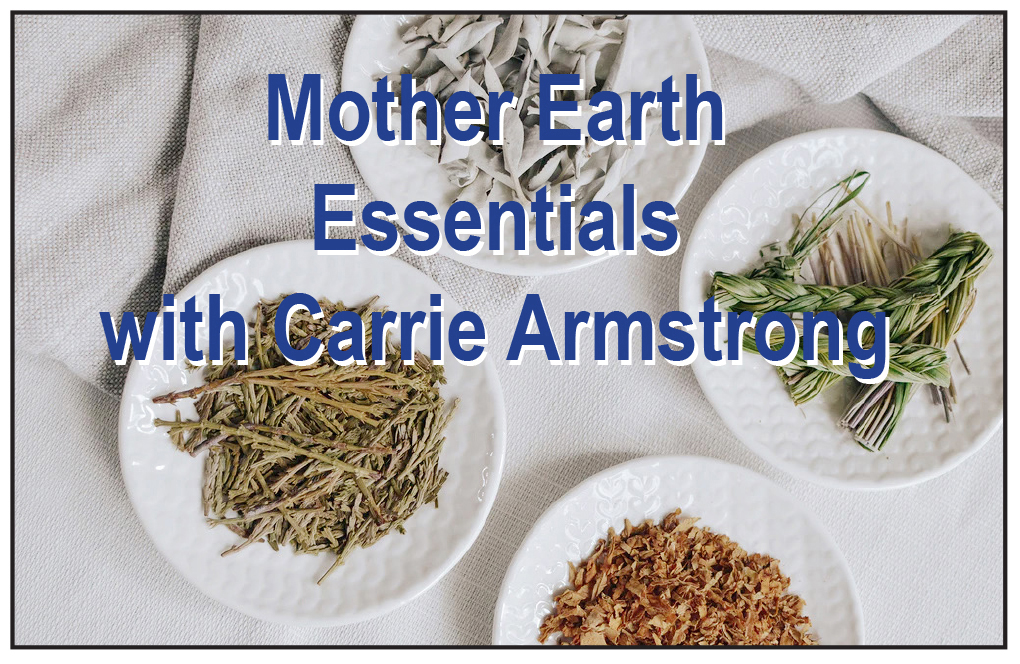
By Carrie Armstrong
Carrie Armstrong is from Michel First Nation in Alberta. She's a teacher, and the founder of Mother Earth Essentials. In 2020, Carrie published her book Mother Earth Plants for Health & Beauty: Indigenous Plants, Traditions and Recipes with Eschia Books. Carrie is reflective of her own teachings. There are many different teachings and variations.
The difference between pure essential oils and fragrance oils is similar to natural versus synthetic products, each with their own uses and limitations.
Aromatherapy essential oils are natural substances found in plants like flowers, fruits, leaves, and more. They are made through processes like steam distillation and extraction, which can be complicated and costly. Essential oils are used to improve physical, emotional and mental health, offering benefits like mood enhancement, pain relief, germ-killing and more. They are powerful natural remedies that require responsible use, especially with the abundance of advice available.
Essential oils are very concentrated! It takes approximately 275 pounds of peppermint plant to make one pound of peppermint essential oil, 200 pounds of lavender flowers to make one pound of lavender essential oil, 2,000 pounds of rose petals to make one pound of rose essential oil. Due to this strong concentration, we must be mindful of how powerful the oils are.
I frequently use essential oils in my Mother Earth Essentials products, often diluted but sometimes for aromatherapy. I am cautious about their strength and make sure my family uses them safely.
It's important to consult with a qualified herbalist or doctor before using them.
It's generally best not to apply essential oils directly to the skin without dilution. Only do so under the guidance of a professional. The small molecules in essential oils can penetrate the skin, so it's crucial to be careful with their use.
I share these recipes to educate and raise awareness, not as a medicine woman or Elder, but as a Cree Métis person with a background in skincare, cosmetics, health education, and herbal studies. My grandmother passed down her teachings to me, inspiring me to pass on this knowledge and encourage others to connect with their communities, Elders, and medicine people.
Homemade bath bombs recipe
Indulge in the luxurious and rejuvenating experience of making your own all-natural bath bombs. These delightful treats add a touch of luxury and fun to your bath time routine. Upon contact with water, they fizz and release the aromatic essence of your chosen essential oil, transforming your bathtub into a spa-like oasis.
The magical effervescence of bath bombs is achieved through the combination of sodium bicarbonate (baking soda) and citric acid. These key ingredients not only create a delightful sensory experience, but also promote healthier skin.
Epsom salt aids in detoxifying your body, while the selected essential oils provide aromatherapy benefits that linger on your skin.
For a revitalizing morning bath, opt for energizing essential oils like peppermint or citrus. In the evening, unwind with calming scents such as lavender to enhance relaxation and prepare for a restful night's sleep.
Ingredients for bath bombs:
60 ml of sweet almond or grapeseed oil
10 ml of essential oil (choose from suggested options below)
900 grams of baking soda
500 grams of citric acid
125 grams of Epsom salt
Fine mist spray bottle filled with pure witch hazel
Bath bomb mold or large muffin tin
Instructions:
(Oils direct on skin aren’t recommended but in a mixture they are diluted. You can use gloves to make your bath bombs. Use oils carefully as they are potent.)
In a small container, combine sweet almond or grapeseed oil with the essential oil of your choice.
Mix the oils thoroughly using a spoon.
In a large glass bowl, combine baking soda and citric acid.
Add Epsom salt to the dry ingredients.
Stir the dry ingredients well to break up any clumps.
Incorporate the oil mixture into the dry ingredients.
Use your hands to blend the dry and wet ingredients until the mixture resembles wet sand that holds its shape when squeezed.
If the mixture is too dry, lightly spray it with witch hazel and mix again. Continue spraying until the mixture holds its shape.
If using a bath bomb mould, fill both halves with the mixture and gently press them together. Alternatively, use a large muffin tin.
Allow the bath bombs to dry and harden overnight.
Once dry, your homemade bath bombs are ready to use. Simply drop one into your bath water and enjoy the luxurious experience!
Experiment with different essential oil combinations to create personalized bath bombs tailored to your preferences and needs.
Relaxation—use 10 ml lavender essential oil or chamomile essential oil
Energizing—use 6 ml peppermint essential oil and 4 ml lemon essential oil
Muscle Aches—use 6 ml wintergreen essential oil and 4 ml black spruce essential oils
PMS—6 ml lavender essential oil and 4 ml sage essential oil
Headache—10 ml peppermint essential oil
There's a lot to learn about our healing plants, and I'm sharing some recipes that I believe are lovely, effective, and easy to make. Creating your own products from what nature provides is not only a money-saver but also a way to feel more connected to our healing traditions. I've loved making teas and skincare products from plants since I was young, and I hope that by sharing these recipes, you'll also appreciate the beauty of our natural remedies.
As you embark on your own creative journey, trust your instincts. Approach each recipe with an open heart and listen to what your body craves. Enjoy the process of discovering the magic of our plant allies.
